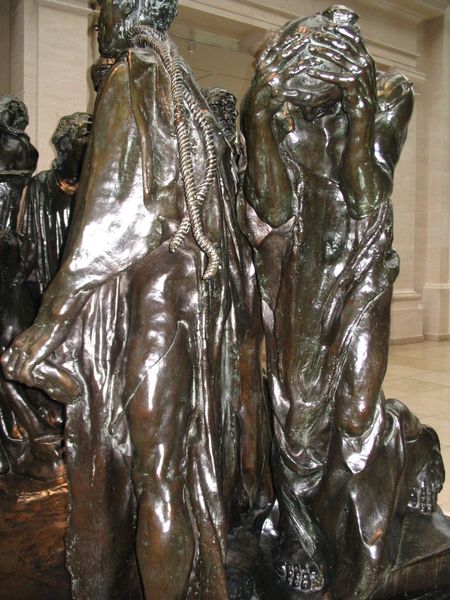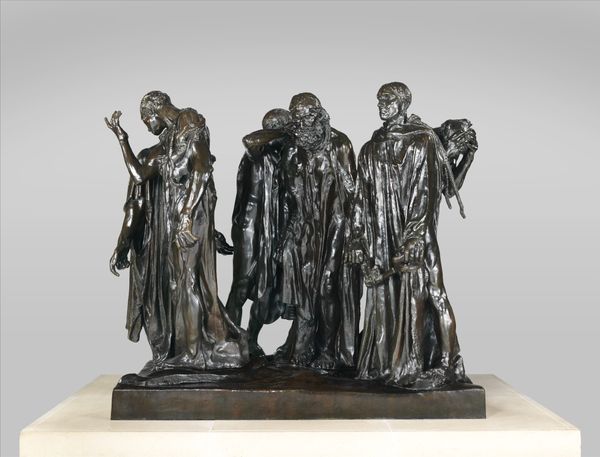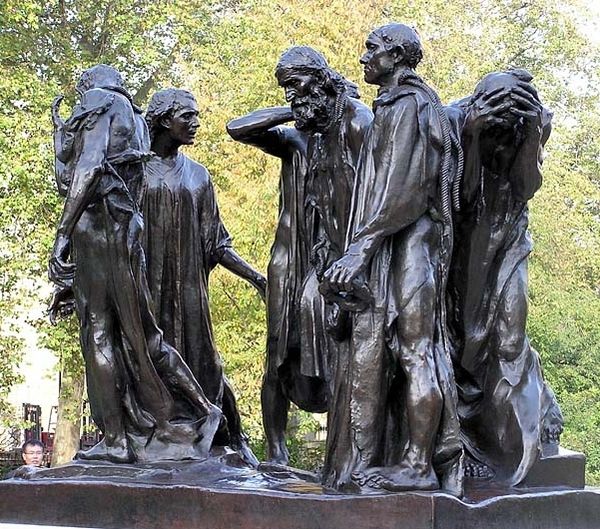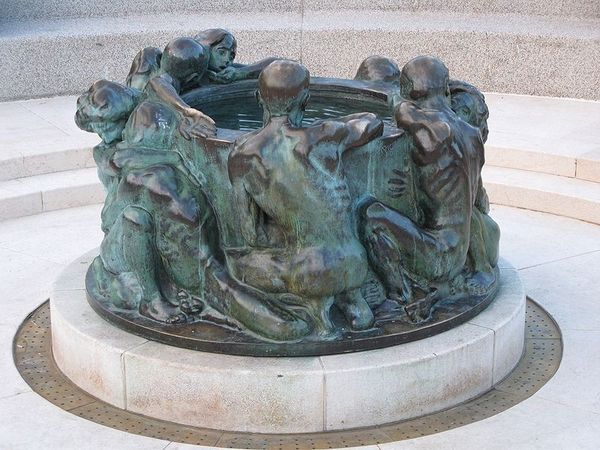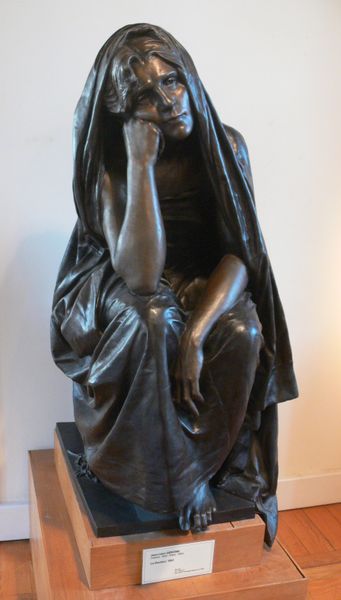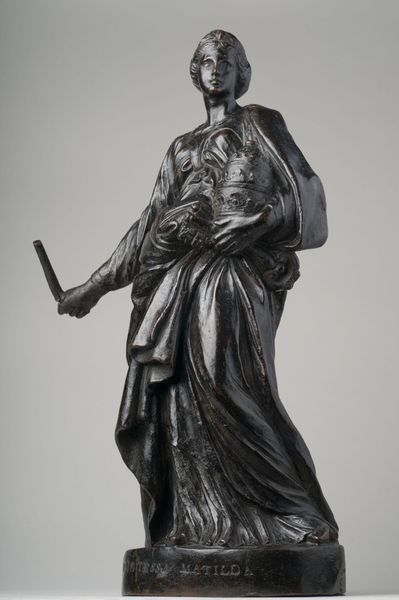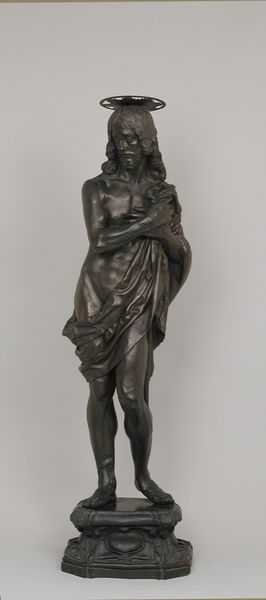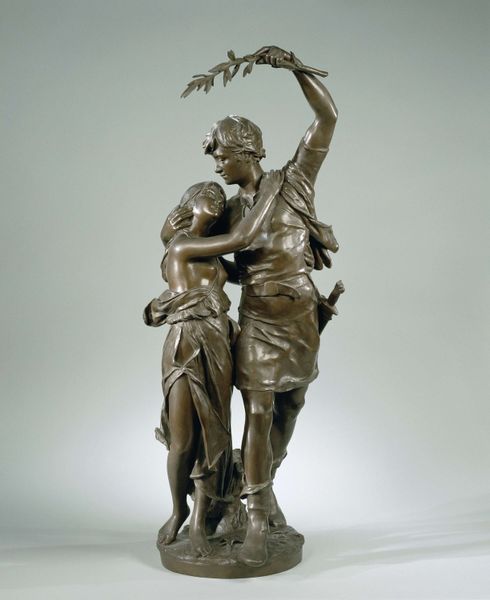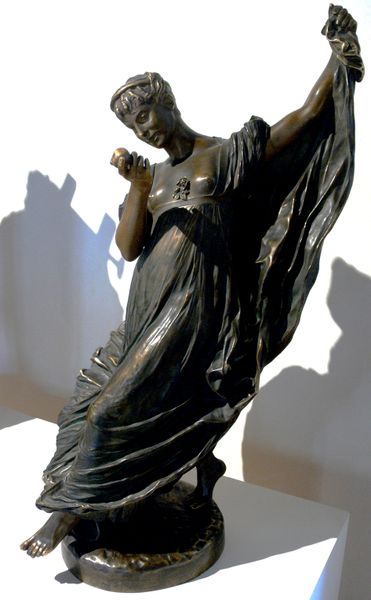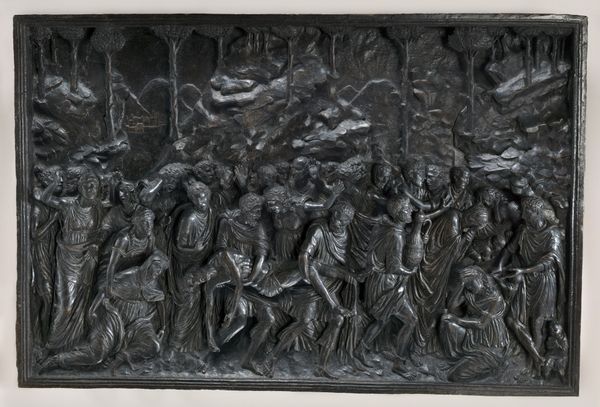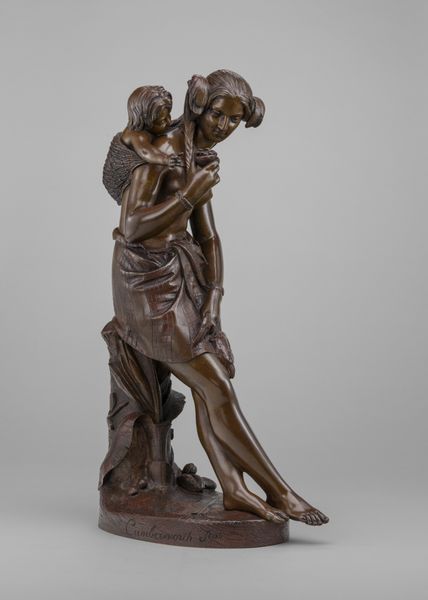
Copyright: Public domain
Auguste Rodin modeled "The Burghers of Calais" in clay, and then had it cast in bronze, a traditional fine art material, which is critical to understanding the work's impact. The bronze-casting process gives the sculpture its permanence, while the application of heat and chemicals alters the surface appearance to an unnatural dark color. Consider the original commission: Rodin was asked to create a monument honoring the six leaders of Calais who offered their lives to the English king in 1347 to save their city. Instead of portraying heroic figures, Rodin presented them as vulnerable and anguished, and at ground level with the public rather than on a pedestal. Rodin used his skills as a modeler to capture the psychological complexity of the figures through their poses and expressions. Rodin challenges traditional sculpture, in that the visible marks of his process of creation invite us to contemplate not just the final artwork, but also the labor and emotion embedded within its making.
Comments
No comments
Be the first to comment and join the conversation on the ultimate creative platform.
